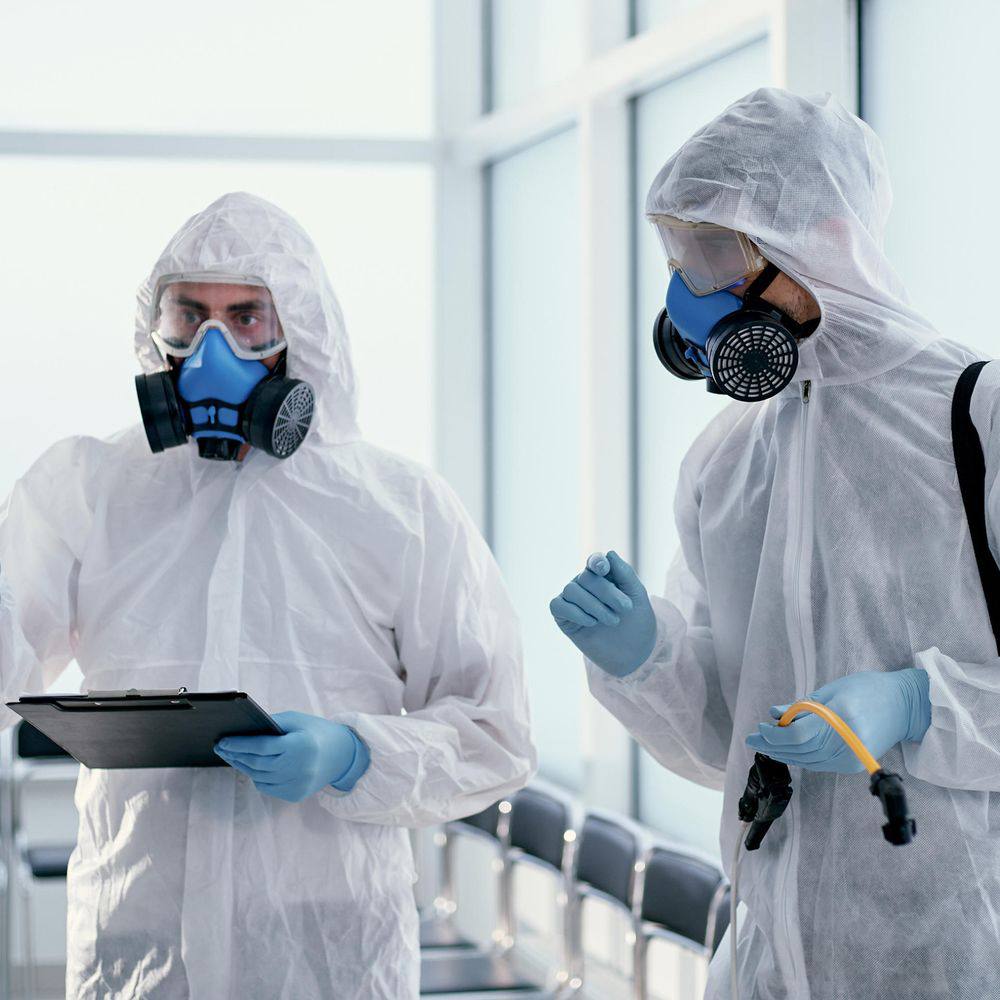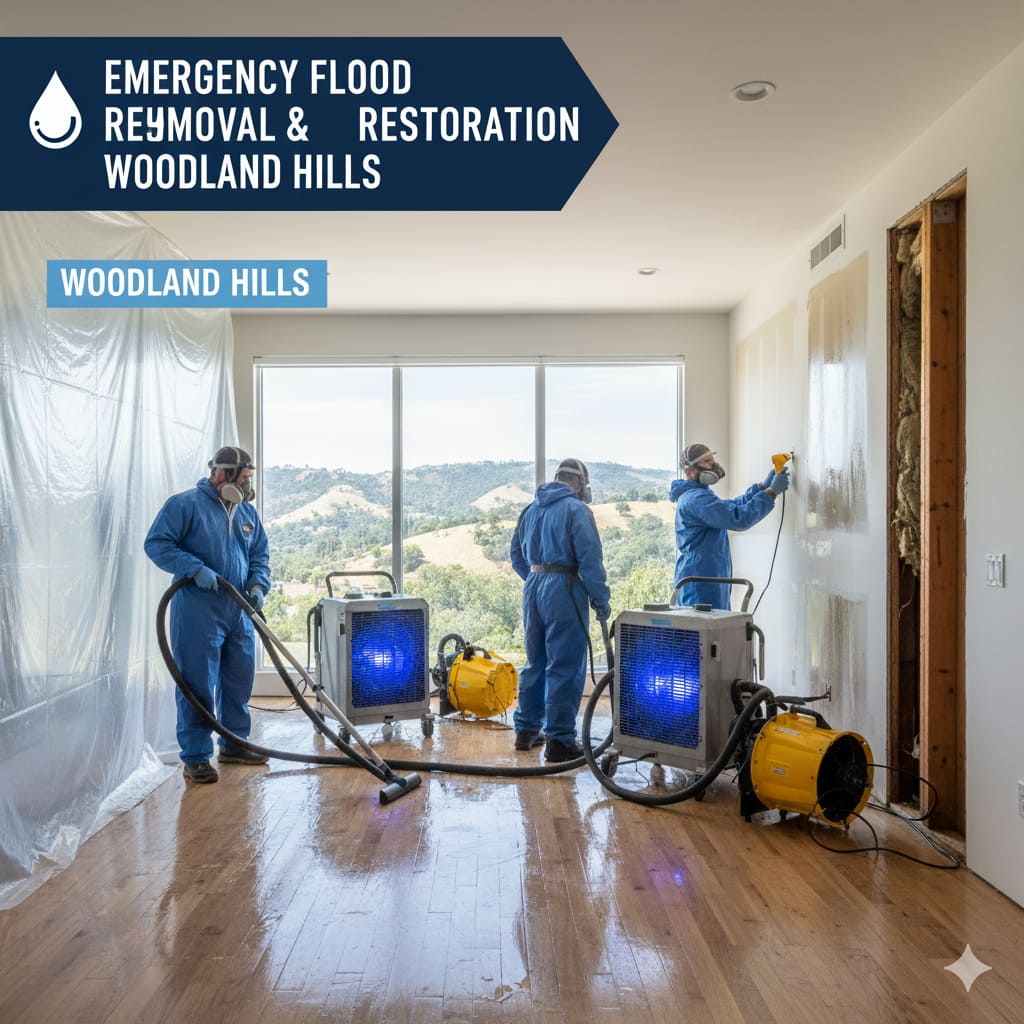






Understanding Flood Restoration in Woodland Hills
Why Specialized Local Expertise Matters

Understanding Flood Restoration in Woodland Hills: Why Specialized Local Expertise Matters
When water invades your Woodland Hills home or business, the consequences extend far beyond what meets the eye. Our community, nestled in the San Fernando Valley, faces unique water damage challenges that require specialized local knowledge. From seasonal weather patterns to specific architectural styles common in our area, effective flood restoration Woodland Hills demands more than just standard equipment—it requires deep understanding of our local environment and building structures.
The Mediterranean climate of Woodland Hills, while generally pleasant, can occasionally deliver intense rainfall that overwhelms drainage systems. Additionally, our area's mix of older homes with classic California ranch-style architecture and modern constructions each present distinct vulnerabilities to water damage. Understanding these local nuances is crucial for effective restoration, which is why our team lives and works within the Woodland Hills community, giving us firsthand knowledge of common issues affecting homes from Topanga Canyon to Warner Center.
Comprehensive Service Breakdown: Going Beyond Basic Water Removal
Advanced Water Damage Restoration
Our water damage Woodland Hills protocol begins with a scientific approach to moisture management. We utilize state of the art moisture detection equipment including thermal imaging cameras, hygrometers, and penetrating moisture meters to identify water migration paths that aren't visible to the naked eye. This comprehensive assessment ensures we address not only surface moisture but also hidden saturation within walls, subfloors, and ceiling cavities.
Our water extraction process employs both truck mounted and portable extraction units capable of removing thousands of gallons of water quickly. Following extraction, we implement a strategic drying plan using industrial-grade air movers, dehumidifiers, and specialized drying equipment. This systematic approach prevents secondary damage and inhibits mold growth, addressing the specific humidity challenges common in the Woodland Hills area.
Professional Mold Remediation Services
Mold remediation Woodland Hills requires more than just surface-level treatment. Our certified mold specialists begin with a thorough inspection and air quality testing to identify both visible and hidden mold colonies. We then implement engineering controls including negative air containment systems with HEPA filtration to prevent cross-contamination during the remediation process.
Application of EPA-approved antimicrobial solutions: Ensures effective elimination of mold spores and microbial growth.
HEPA vacuuming of all surfaces: Removes fine mold particles from affected areas for complete cleanliness.
Removal and proper disposal of contaminated materials: Safely discards materials beyond recovery following EPA standards.
Final clearance testing: Confirms successful remediation and a safe indoor environment.
Preventive recommendations: Tailored solutions for Woodland Hills' humid climate to prevent future mold growth.
Structural Drying & Damage Repair
The structural integrity of your property depends on proper drying techniques. Our technicians are certified in structural drying and understand how different building materials common in Woodland Hills homes—from adobe-style walls to modern drywall—respond to water exposure. We monitor the drying process daily with detailed documentation, ensuring materials return to appropriate dryness levels before beginning reconstruction.
Content Restoration & Recovery
Your personal belongings matter. We offer comprehensive content restoration services including:
Electronics restoration: Using specialized drying chambers to recover sensitive devices.
Document and photograph freeze-drying: Prevents ink bleeding and mold on important papers.
Furniture restoration and reupholstering: Restores aesthetic and structural integrity.
Art and antique preservation: Carefully cleans and stabilizes delicate materials.
Clothing and textile cleaning: Removes contaminants and restores fabric freshness.
The Woodland Hills Advantage: Why Local Expertise Makes the Difference
Faster Response Times: We reach properties within 30–45 minutes to minimize damage.
Knowledge of Local Building Codes: Ensures all work complies with Woodland Hills and Los Angeles County standards.
Understanding of Regional Architecture: Experience with mid-century and Spanish-style homes ensures proper restoration.
Community Relationships: Strong local partnerships streamline insurance and inspection processes.
Our Advanced Equipment & Technology
Thermal Imaging Cameras: Detect hidden moisture behind walls and floors.
LGR Dehumidifiers: Extract more moisture efficiently than standard models.
Hydro-X Water Extractors: Remove standing water rapidly.
HEPA Air Scrubbers: Eliminate airborne contaminants and allergens.
Ozone Generators: Neutralize persistent odors at the molecular level.
Emergency Response Protocol: What to Expect When You Call
Immediate Dispatch: A project manager collects details and sends a crew instantly.
Site Assessment & Safety Evaluation: Identifies electrical and structural hazards upon arrival.
Water Source Identification & Containment: Stops the water flow and isolates affected areas.
Detailed Damage Documentation: Moisture mapping and photos support insurance claims.
Immediate Water Extraction: Begins water removal while restoration planning starts.
The Science of Drying: Understanding the Process
Water Removal: Uses submersible pumps and extractors for initial removal.
Evaporation: High-speed air movers enhance surface drying.
Dehumidification: Industrial units capture and remove airborne moisture.
Temperature Control: Maintains optimal drying conditions for efficiency.
Working With Insurance: Simplifying the Claims Process
Detailed Documentation: Complete records for claim accuracy.
Adjuster Communication: We liaise directly with your insurer.
Coverage Guidance: Clear explanation of your policy terms.
Paperwork Assistance: Ensures all forms are correctly submitted.
Claim Maximization: Helps secure full entitled compensation.
Prevention Strategies: Protecting Your Woodland Hills Property
Regular Plumbing Inspections: Detect early pipe corrosion or leaks.
Landscape Grading: Prevents rainwater intrusion near foundations.
Appliance Maintenance: Check hoses and connections routinely.
Gutter Cleaning: Clear blockages before the rainy season.
Main Water Shut-off Awareness: Ensure all family members know its location.
Health & Safety Considerations in Water Damage Restoration
Category 1 Water (Clean): Originates from sanitary sources like supply lines.
Category 2 Water (Gray): Contains contaminants from appliances or sinks.
Category 3 Water (Black): Includes sewage and floodwater with harmful pathogens.
Customer Success Stories: Real Woodland Hills Restoration Projects
Warner Center Office Complex: Restored multi-floor plumbing failure swiftly with minimal business interruption.
Traditional Woodland Hills Home: Preserved original hardwood floors and period architecture post-leak.
Multi-Story Condo Complex: Coordinated repairs across multiple units efficiently during heavy rains.
Certifications & Training: Our Commitment to Excellence
Water Damage Restoration Certified through IICRC standards.
Applied Structural Drying for advanced moisture control.
Commercial Drying Specialist qualification for large-scale projects.
Mold Remediation certified for complete contamination removal.
Health and Safety compliance training for safe operations.
Taking Immediate Action: Your Next Steps
Ensure Safety: Shut off electricity if safe to do so.
Stop the Source: Close the main water valve.
Call Professionals: Reach us immediately at (818) 431-8186.
Document Damage: Photograph affected areas for insurance.
Avoid Contamination: Stay out of heavily flooded zones.
Why Timely Response is Critical for Woodland Hills Properties
Within 1 hour: Water spreads and absorbs into materials.
Within 24 hours: Drywall swells and mold spores activate.
Within 48 hours: Mold colonies form, wood swells, metals corrode.
Within 1 week: Structural damage worsens and costs escalate.
Comprehensive Service Area: Proudly Serving Woodland Hills
Warner Center and nearby business complexes.
Pierce College area residential neighborhoods.
Topanga Canyon Boulevard surrounding properties.
Ventura Boulevard corridor commercial and mixed-use buildings.
El Camino Real area family homes and estates.
Contact Us for Immediate Woodland Hills Flood Restoration
Don't let water damage disrupt your life longer than necessary. Our local team is ready to respond 24/7 with the expertise, equipment, and dedication Woodland Hills residents deserve.
For immediate emergency service or to schedule an assessment, call us now at (818) 431-8186.
We're committed to restoring not just your property, but your peace of mind. Trust your local Woodland Hills flood restoration experts to handle your water damage emergency with the care and professionalism you deserve.
